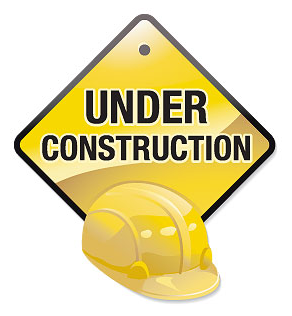Connecting Your System to the Electricity Grid
While renewable energy systems are capable of
powering houses and small businesses without any connection to
the electricity grid, many people prefer the advantages that
grid-connection offers.
A grid-connected system allows you to power
your home or small business with renewable energy during those
periods (diurnal as well as seasonal) when the sun is shining,
the water is running, or the wind is blowing. Any excess
electricity you produce is fed back into the grid. When
renewable resources are unavailable, electricity from the grid
supplies your needs, thus eliminating the expense of electricity
storage devices like batteries.
In addition, power providers (i.e. electric
utilities) in most states now allow
net metering, an arrangement where the excess electricity
generated by grid-connected renewable energy systems "turns
back" your electricity meter as it is fed back into the grid.
Thus, if you use more electricity than your system feeds into
the grid during a given month, you pay your power provider only
for the difference between what you used and what you produced.
Your local system supplier or installer should
know about and be able to help you meet the requirements from
your community and power provider.
The sections below will help you learn about
some of the issues involved in connecting a small renewable
energy system to the grid:
From
http://www.eere.energy.gov/consumer/your_home/electricity/index.cfm/mytopic=10440
Equipment Required for
Grid-Connected Systems
Aside from the major small renewable
energy system components, you will need to purchase some
additional equipment (called "balance-of-system") in order
to safely transmit electricity to your loads and comply with
your power provider's grid-connection requirements. You may
need the following items:
Because grid-connection requirements vary,
you or your system supplier/installer should contact your
power provider to learn about its specific grid-connection
requirements before purchasing any part of your renewable
energy system.
From
http://www.eere.energy.gov/consumer/your_home/electricity/index.cfm/mytopic=10440
Small Solar Electric Systems
A small solar electric or photovoltaic
(PV) system can be a reliable and pollution-free producer of
electricity for your home or office. And they're becoming
more affordable all the time. Small PV systems also provide
a cost-effective power supply in locations where it is
expensive or impossible to send electricity through
conventional power lines.
Because PV technologies use both
direct and scattered sunlight to create electricity, the
solar resource across the United States is ample for small
solar electric systems. However, the amount of power
generated by a solar system at a particular site depends on
how much of the sun's energy reaches it. Thus, PV systems,
like all solar technologies, function most efficiently in
the southwestern United States, which receives the greatest
amount of solar energy.
You can also use PV technology to provide
outdoor lighting.
Here you can find the following
information:
-
Learn the basics of how a small PV
system produces electricity.
-
Start here to determine whether a
small PV system would be feasible, practical, and
economical for you.
-
Learn more about system
components—solar cells, modules, and balance-of-system
parts.
-
Find out what you need to consider
before you install a system, including basic maintenance
tips.
From
http://www.eere.energy.gov/consumer/your_home/electricity/index.cfm/mytopic=10440
Small
Wind Electric Systems
Small wind electric systems are one of the
most cost-effective, home-based renewable energy systems. These
systems are also nonpolluting.
If a small wind electric system is right for
you, it can do the following:
- Lower your electricity bills by 50–90%
- Help you avoid the high costs of having
utility power lines extended to a remote location
- Help uninterruptible power supplies ride
through extended utility outages.
Small wind electric systems can also be used
for a variety of other applications, including
water pumping on farms and ranches.
Here you can find the following information:
-
Learn the basics of how a small wind
system produces electricity.
-
Start here to determine whether a small
wind energy system would be feasible, practical, and
economical for you.
-
Learn more about system
components—turbines, towers, and balance-of-system parts.
-
- Find out what you need to consider before
you install a system, including basic maintenance tips.
From
http://www.eere.energy.gov/consumer/your_home/electricity/index.cfm/mytopic=10440
Microhydropower Systems
Microhydropower systems usually generate up to
100 kilowatts (kW) of electricity. Most of the hydropower
systems used by homeowners and small business owners, including
farmers and ranchers, would qualify as microhydropower systems.
In fact, a 10-kilowatt microhydropower system generally can
provide enough power for a large home, a small resort, or a
hobby farm.
Here you can information about the following
topics:
From
http://www.eere.energy.gov/consumer/your_home/electricity/index.cfm/mytopic=10440
Small "Hybrid" Solar and Wind Electric Systems
According to many renewable energy
experts, a small "hybrid" electric system that combines
wind and
solar (photovoltaic) technologies offers several
advantages over either single system.
In much of the United States, wind speeds
are low in the summer when the sun shines brightest and
longest. The wind is strong in the winter when less sunlight
is available. Because the peak operating times for wind and
solar systems occur at different times of the day and year,
hybrid systems are more likely to produce power when you
need it.
Many hybrid systems are
stand-alone systems, which operate "off-grid"—not
connected to an electricity distribution system. For the
times when neither the wind nor the solar system are
producing, most hybrid systems provide power through
batteries and/or an engine generator powered by conventional
fuels, such as diesel. If the batteries run low, the engine
generator can provide power and recharge the batteries.
Adding an engine generator makes the
system more complex, but modern electronic controllers can
operate these systems automatically. An engine generator can
also reduce the size of the other components needed for the
system. Keep in mind that the storage capacity must be large
enough to supply electrical needs during non-charging
periods.
Battery banks are typically sized to
supply the electric load for one to three days.
From
http://www.eere.energy.gov/consumer/your_home/electricity/index.cfm/mytopic=10440

